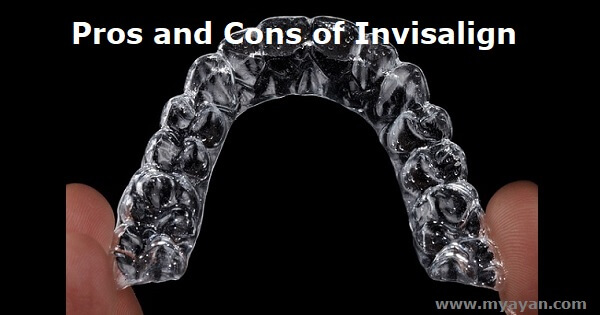You’d be surprised to know that over 14 million users across the US, including 3 million teens have Invisalign aligners. Invisalign aligners are a modern technology that helps to straighten teeth for adults, teens, and even children. Invisalign is an orthodontic treatment method developed by Align Technology in 1997 that uses clear plastic aligners to move the teeth into alignment gradually. The series of custom-made Invisalign aligners are designed specifically for each patient using 3D imaging technology. If you are still trying to determine the pros and cons of Invisalign aligners, here is what you need to know.
Invisalign works by gently moving the teeth over time using gentle pressure applied through the aligner trays and gradual shifts in tooth position. This allows patients to maintain a comfortable experience while achieving desired results in record time. Invisalign is designed to be aesthetically pleasing and discreet, making the process of straightening teeth less noticeable than traditional braces.
In addition to being virtually invisible, Invisalign aligners are also more comfortable than metal braces. The smooth plastic material used in Invisalign aligners does not cause as much friction or discomfort as traditional braces. Additionally, they can be removed when eating and cleaning your teeth, allowing for better hygiene and easier access to certain areas of the mouth. With that much picture to contemplate, let’s move on to the pros and cons of Invisalign Clear aligners.
The Invisalign technology offers several benefits over braces. Here are some of the pros of Invisalign clear aligners:
Invisalign aligners are easy to take care of. You can brush them with a toothbrush dipped in bleach and water every other day to clean off any stains that may have accumulated since you last wore them.
Since Invisalign aligners are removable, it is easier to brush and floss around them. This helps reduce the risk of cavities and gum disease from food trapped in brackets with traditional braces.
Invisalign aligners cause less irritation to soft tissues than metal braces. Invisalign is much more physically comfortable since there are no wires or brackets. You don't have to worry about getting any painful nicks or cuts in your mouth because they are smooth and won't irritate your mouth. The aligners lack any sharp edges and are similar to a mouthguard.
The transparent plastic material used for the aligners makes them virtually invisible when worn which is one of the noticeable pros of Invisalign clear aligners. Invisalign is made from clear plastic, so it won't show when you wear them. In other words, they are more attractive and less conspicuous than traditional metal braces. This treatment method doesn't have an age limit because adults often prefer Invisalign too.
Invisalign braces can be removed before eating, meaning there is no need to avoid certain foods or worry about food particles getting stuck in the aligners.
Since Invisalign only requires adjustments every 4-6 weeks, patients experience fewer trips to the office than with traditional braces.
While some users feel comfortable with it, unfortunately, there are also some cons to Invisalign braces some may experience.
Invisalign is a costly investment, with an average price tag of $3,500 to $8,000. Remember that dental insurance rarely covers the treatment so this entire cost will come out of your pocket. If you're running on a tight budget or don't have extra cash saved up, Invisalign is not your best option. And that’s one of the common cons of Invisalign aligners.
Invisalign attachments, which include enamel ridges that adhere to your teeth much like traditional braces brackets, are becoming increasingly common. These attachments help the aligners fit better and facilitate the movement of your teeth into the proper position. Unfortunately, Invisalign extensions often make the treatment more visible, resembling actual braces in many cases.
You must wear Invisalign for at least 22 hours every day. You should only remove them to eat or clean your teeth. So, if you have plans for a date night or party, bring them along!
Discomfort and even pain are joint when you receive new Invisalign aligner trays. The pressure that orthodontists typically refer to can cause discomfort as your teeth readjust to a new set of aligners. Consider taking a pain reliever to help manage this pain while your teeth change.
Some patients find Invisalign aligners to be a nuisance. They have to be removed for every meal, which can lead to feelings of embarrassment in social situations. They also must brush their teeth after each meal before putting the aligners back in, which translates into multiple daily brushing sessions and can be seen as inconvenient.
Pros and cons of Invisalign Aligners: Conclusion
Overall, Invisalign is an effective and reliable form of orthodontic treatment that can help patients achieve their desired smile in less time than traditional braces. If you are considering straightening your teeth with Invisalign aligners, speak to a qualified dentist or orthodontist who can evaluate your needs and determine the best solution. With proper care and maintenance, your new smile will last a lifetime.

Yes, Invisalign is usually more expensive than traditional braces due to the cost of materials and labor involved. However, some insurance plans may cover part or all of the treatment.
Some patients may experience mild discomfort when switching between aligners, but this should subside after a few days. If you experience persistent pain or discomfort, contact your orthodontist as soon as possible.
The most common risks associated with Invisalign aligners are tooth decay, gum disease, and root damage. It is essential to practice good oral hygiene when wearing aligners by brushing and flossing regularly. Consult your orthodontist if you experience pain or discomfort while wearing your aligners.
Invisalign is not suitable for all cases, and your orthodontist can advise you if it is an appropriate treatment for you. Factors such as age, lifestyle, and severity of the case may affect whether or not Invisalign is suitable. Your orthodontist will be able to provide further information on this.